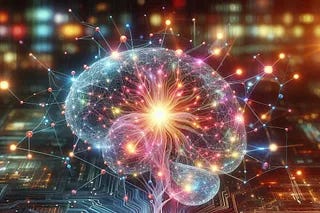Chapter 17- Safety, Ethics, and Trust in Embodied AI: Addressing concerns related to autonomous operation, accountability, and the societal impact of embodied systems.
Chapter 17: Safety, Ethics, and Trust in Embodied AI
Purpose: As embodied AI systems move out of controlled laboratories and into our homes, workplaces, and public spaces, the considerations of safety, ethics, and human trust become paramount. This chapter addresses the critical non-technical aspects that govern the responsible design, deployment, and operation of AI systems that can physically interact with the world. It explores the challenges, frameworks, and ongoing discussions necessary to ensure these technologies benefit humanity while mitigating potential risks.
Key Topics Covered:
Fundamental Principles of Robot Safety:
Definition of Safety: Freedom from unacceptable risk of harm.
Risk Assessment: Identifying potential hazards, estimating likelihood and severity, and evaluating acceptability of risk.
Safety Standards (e.g., ISO 10218, ISO/TS 15066 for collaborative robots): Understanding regulatory frameworks and best practices for safe robot design and integration.
Hardware Safety:
Physical Safeguards: Fences, light curtains, emergency stops (E-stops).
Force and Power Limiting: Designing robots that cannot exert dangerous forces or dissipate dangerous power.
Redundancy: Multiple sensors or actuators to prevent single points of failure.
Software Safety:
Failure Modes and Effects Analysis (FMEA): Systematically identifying potential software failures and their consequences.
Robustness and Error Handling: Designing software to gracefully handle unexpected inputs or internal errors.
Predictability: Ensuring robot behavior is understandable and not prone to erratic actions.
Formal Verification: Mathematically proving certain safety properties of the control system.
Specific Safety Challenges in Embodied AI:
Human-Robot Collaboration Safety: The unique challenges of robots and humans sharing a workspace: collision avoidance, physical contact, unintended motion.
Uncertainty and Real-World Stochasticity: How to guarantee safety when faced with noisy sensors, unpredictable environments, and imperfect world models.
Learning and Adaptability: How to ensure learned behaviors remain safe, especially when the robot adapts to new situations or learns from limited data.
Explainable Safety: Making it clear why a robot is behaving safely or why it took a particular safety action.
Emergent Behavior: Complex interactions within the AI system that lead to unforeseen and potentially unsafe behaviors.
Cybersecurity: Protecting embodied AI systems from malicious attacks that could compromise their safety or control.
Ethical Considerations for Embodied AI:
Autonomy and Control:
Level of Autonomy: How much control should humans cede to robots?
Human Oversight: When and how should humans intervene or supervise autonomous systems?
Accountability: Who is responsible when an autonomous robot causes harm or makes a morally ambiguous decision?
Privacy: Robots equipped with cameras, microphones, and other sensors collecting vast amounts of data about individuals and private spaces.
Bias and Fairness:
Algorithmic Bias: If training data reflects societal biases, the robot's behavior might perpetuate or amplify those biases (e.g., in facial recognition, object recognition).
Fairness in Deployment: Ensuring equitable access and non-discriminatory application of embodied AI technologies.
Societal Impact:
Job Displacement: The economic and social consequences of increasing automation.
Human Deskilling: Over-reliance on robots leading to a decline in human capabilities.
Dehumanization: The potential for robots to reduce human interaction or empathy in certain contexts (e.g., care robots).
Weaponization: The dual-use dilemma and the development of lethal autonomous weapons systems.
Moral Decision-Making:
"Trolley Problem" in Robotics: How should robots be programmed to make decisions in situations with unavoidable harm?
Value Alignment: Ensuring the robot's goals and values align with human values.
Building and Maintaining Trust:
Transparency and Explainability (XAI):
Interpretability: Understanding how and why a robot makes decisions.
Predictability: Consistent and understandable behavior.
Verbal Explanations: Robots explaining their reasoning or current state.
Reliability and Robustness: Consistent performance and graceful handling of failures.
Perceived Safety: Beyond actual safety, ensuring humans feel safe interacting with robots.
Usability and Intuitive Interaction: Easy-to-use interfaces and natural modes of communication.
Adaptability to Human Needs: Robots learning and adjusting to individual human preferences.
Regulation and Certification: Clear guidelines and third-party verification to assure safety and quality.
Legal and Regulatory Frameworks:
Product Liability: Who is liable for defects or harm caused by a robot?
Tort Law: Applying existing legal principles to new robotic scenarios.
Emerging Regulations: Discussions and proposals for specific robot and AI laws at national and international levels.
Standardization Bodies: Role of organizations in developing technical standards.
Learning Outcomes: Upon completing this chapter, students should be able to:
Articulate the critical importance of safety in the design and deployment of embodied AI systems.
Identify key hardware and software safety principles and challenges, especially in human-robot collaboration.
Discuss major ethical concerns related to autonomy, privacy, bias, and societal impact in embodied AI.
Understand the concept of "trust" in HRI and strategies for building and maintaining it.
Recognize the emerging legal and regulatory landscape for embodied AI.
Engage in informed discussions about the responsible development and deployment of intelligent robots.




